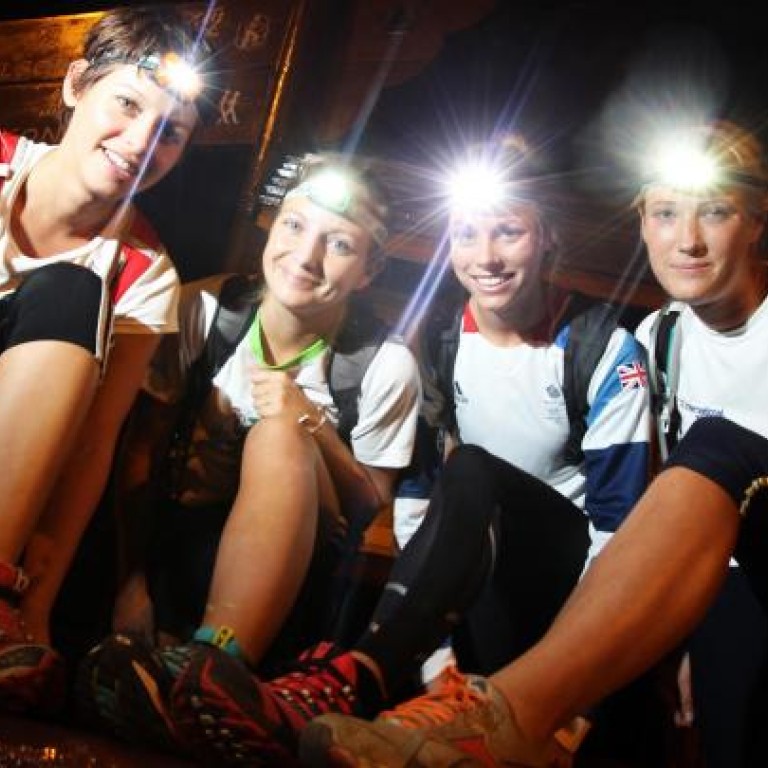
Rally to the cause
Four young Hong Kong women have found the motivation to swap their heels for hiking boots in preparation for next Friday's Oxfam Trailwalker. They did it by setting themselves ambitious fundraising targets.
"Initially, the physical challenge was our main focus," says Lauren Mead, leader of Team Danger. But as training sessions became longer and harder, the team found a new source of motivation in fundraising. "Being able to do it for a good cause has only spurred us on further," explains Mead.
As running continues to grow in popularity, so too does the number of participants racing for a cause. In a study of 672 half-marathon participants, researchers from Griffith University in Queensland, Australia found that running in aid of a local charity made the experience more meaningful, increasing motivation and event attachment. The research, published in the in 2010, also found that event sponsors benefited through the positive connections made by participants.
Mead's teammates are Elena Houghton, Phillipa Cook, and Phillipa de Fonblanque. They're all members of an all-female sailing team. All participating Trailwalker teams must raise a minimum of HK$6,800, which will go to Oxfam.
Team Danger set their target at HK$30,000 and held a charity auction event in September with items donated by a few local businesses. The event had 150 guests, and the target was exceeded. The women say they were surprised at how generous and supportive the Hong Kong community has been.
Houghton attributes the success to strategic planning: "We approached companies that we felt would resonate with the crowd on the night. Guests could bid on items that they were genuinely excited about and sponsors could connect with people."
Cook's advice is to look after sponsors who make contributions, and manage expectations fairly. "We promised our sponsors the best exposure we could manage and delivered on all fronts," she says.
The team provided an information session on the Oxfam's work and the Trailwalker event, which they believe increased engagement with their cause. "Guests responded really well once they realised the challenge we were undertaking," says de Fonblanque.
While training and fundraising commitments have been difficult to manage on top of their jobs, the women say it has been worth the effort. "It has brought us closer as a team and as friends, and it has made us fitter and stronger," says Mead. "It has made us more determined to hit the start line, so that we can show our appreciation to everyone who has supported us along the way."
Inspired by Trailwalker and the recent trail running trend, the pair looked for a way to engage colleagues while benefiting the charity. "Trailwalker is a phenomenal event, but all proceeds go to Oxfam," says Tsai. "We wanted to fundraise for Half the Sky and do something outside the norm of banquets and the like." De Pree adds: "We have evolved from a format of sponsoring an individual to race, to one where previous donors turn up to the event to do the fundraising themselves."
Last Saturday, more than 100 employees, family and friends started at different points of the MacLehose trail at different times. Some ran 50 kilometres while others hiked four, but everyone finished at the mid-point of the 100-kilometre trail near Sha Tin Pass by 2.30pm. The format of their bespoke fundraising event has made it accessible for everyone, young and old, to get involved.
"We designed it so that having kids is no excuse, and it can be used as good training for Trailwalker," says Tsai. "Now we have people's buy-in, we find they are pretty excited to go out there and raise some money."
Getting friends and family involved at a level within their ability range has made the fundraising goal of US$50,000 - which has been hit - more achievable, says Tsai. "I believe that people are inherently generous towards a good cause. You just need to give them a good reason to donate."
Simon Southgate believes there is no reason to stop contributing just because a fundraising event is over. The chief inspector with the Hong Kong police force will run the Racing the Planet 250-kilometre ultramarathon in Antarctica later this month, his fourth desert ultramarathon in four years.
Southgate raises money for two charities: Operation Breakthrough, which provides sporting opportunities for juvenile delinquents, and the St Baldrick's Foundation, which works with the Children's Cancer Foundation. Southgate believes his long-term commitment has ensured greater results for the charities. "I felt that committing to complete the series of four races would show a greater level of commitment to the charities. It is also a tougher challenge," he says.
Southgate says it pays to be imaginative when trying to raise money, and he advises charity runners to try and stand out from the crowd. "Successfully engaging your potential donors requires a specific message that resonates," he says. The money he has raised provided Operation Breakthrough with bus transport to take children to and from training sessions.
But raising money is just one aspect of charity work. Publicity is also useful: "Raising awareness of the plight that charities face, and the struggles charities seek to help, is just as important," says Southgate.
